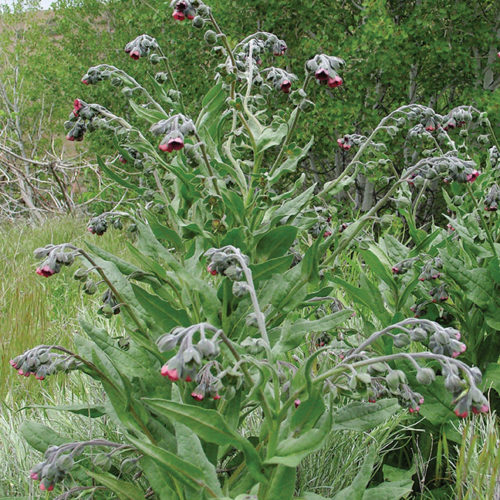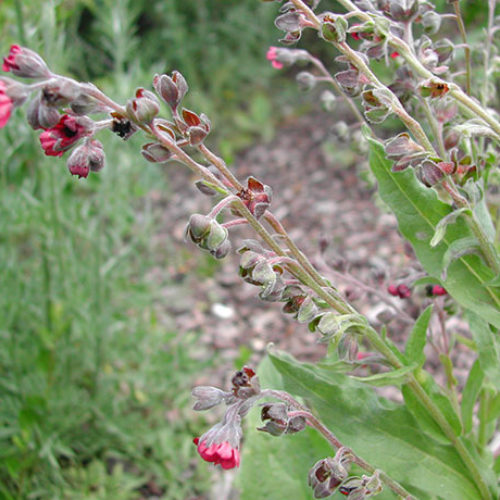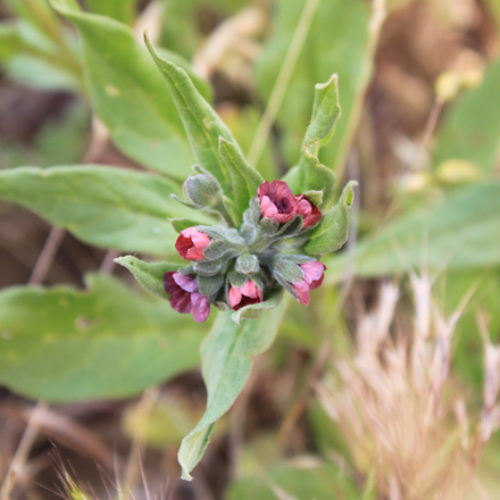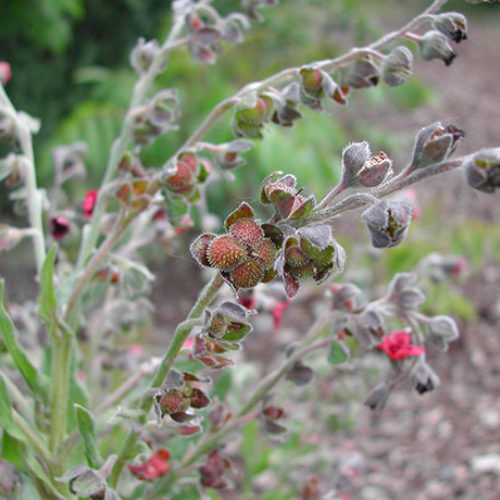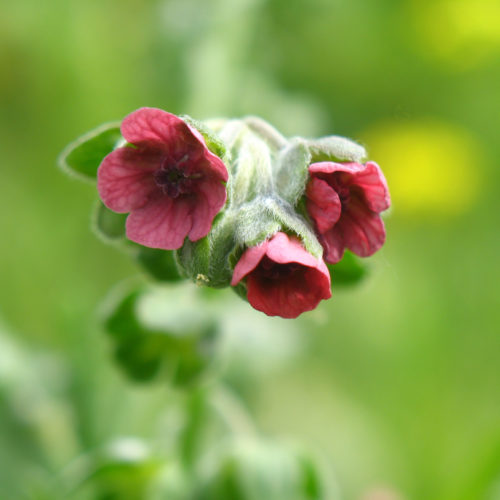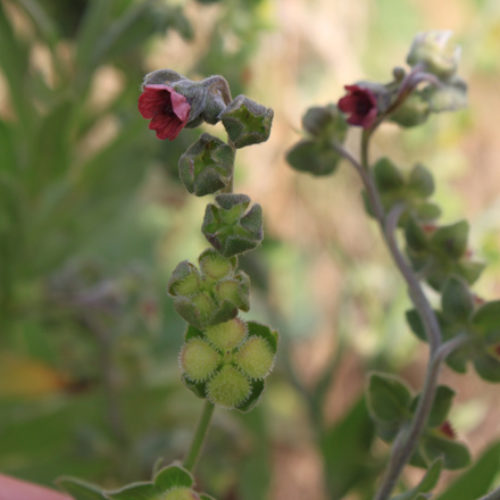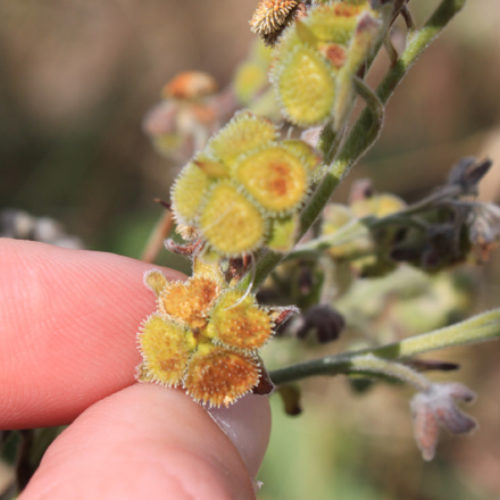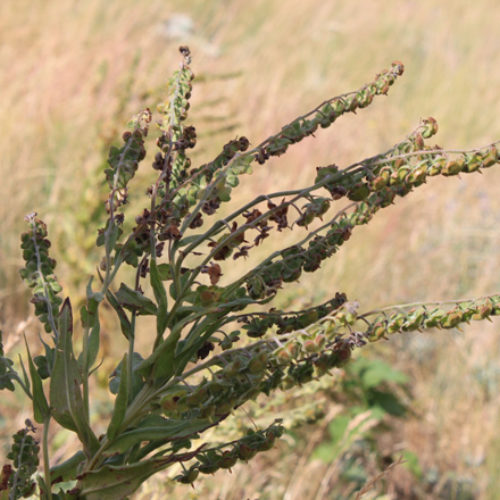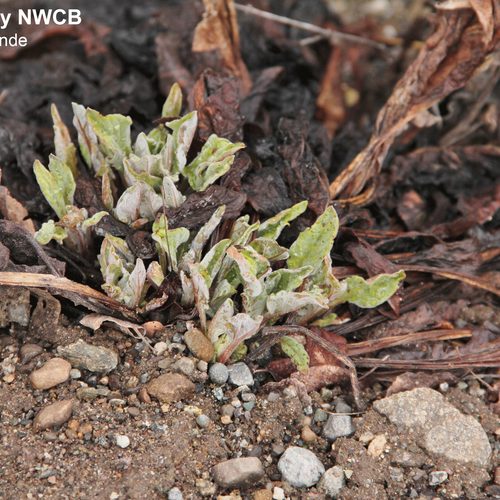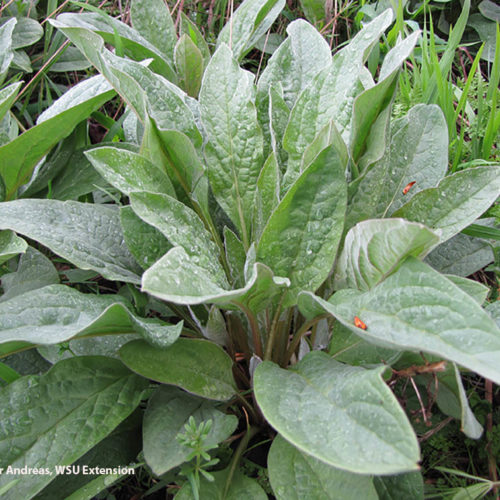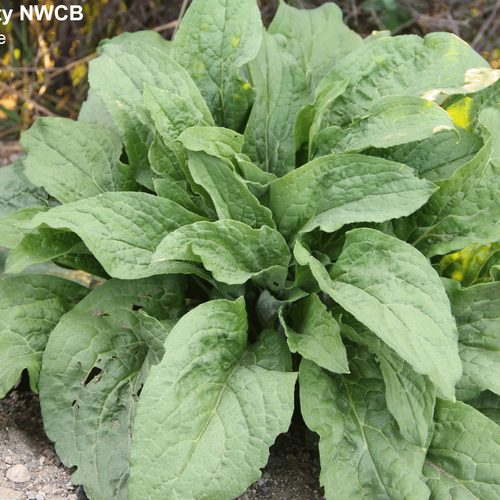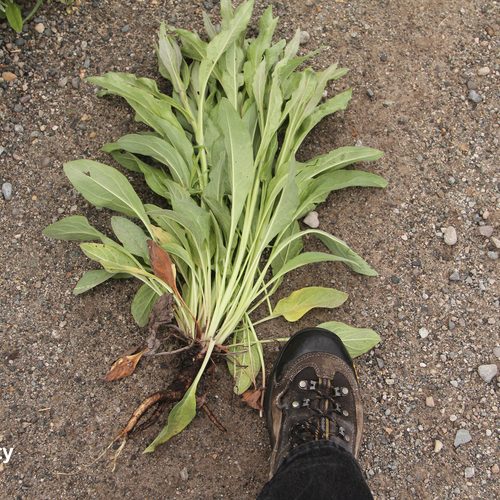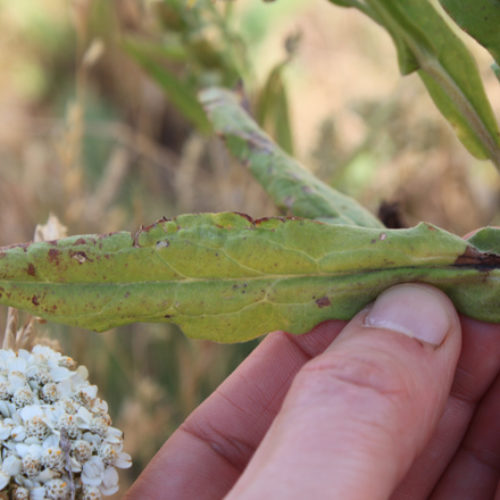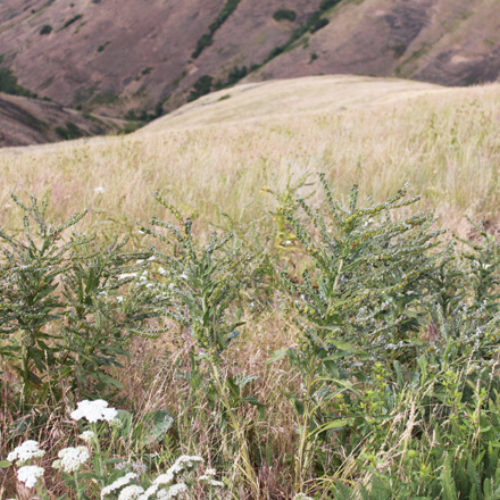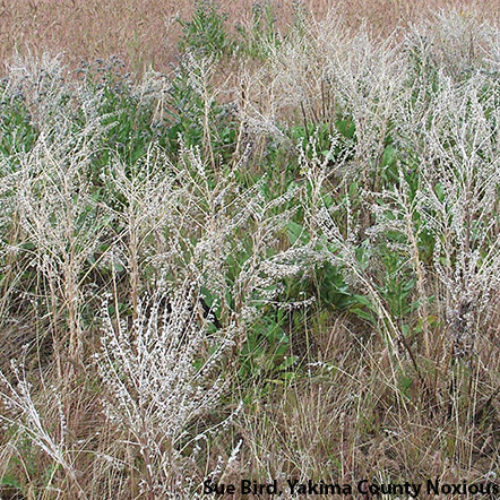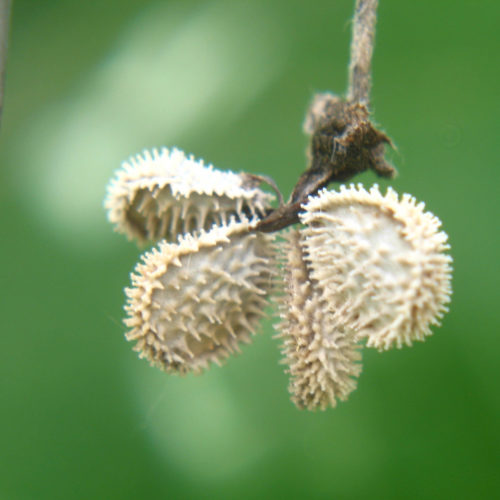Houndstongue
Cynoglossum officinale
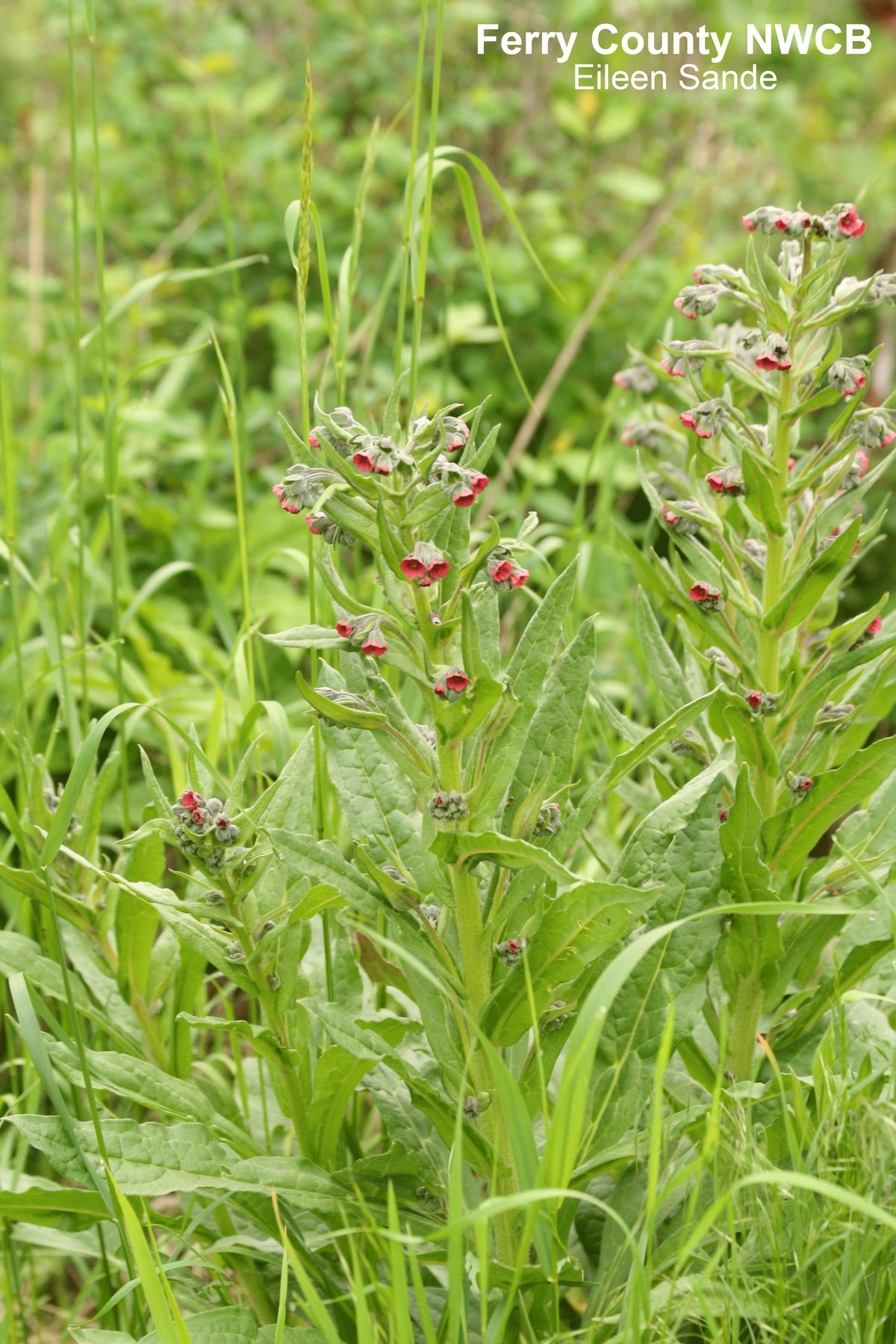
Family: Boraginaceae
Other Common Names: gypsy flower
Weed class: B
Year Listed: 1988
Native to: Europe and Asia
Is this Weed Toxic?:
humans, livestock
Legal listings:
This plant is also on the Washington State quarantine list. It is prohibited to transport, buy, sell, offer for sale, or distribute plants or plant parts of quarantined species into or within the state of Washington or to sell, offer for sale, or distribute seed packets of seed, flower seed blends, or wildflower mixes of quarantined species into or within the state of Washington. Please see WAC 16-752 for more information on the quarantine list. For questions about the quarantine list, contact the Washington State Department of Agriculture's Plant Services Program at (360) 902-1874 or email PlantServices@agr.wa.gov.
Why Is It a Noxious Weed?
Houndstongue is a very strong competitor of desirable forage and is poisonous. It contains pyrrolizidine alkaloids that stop the reproduction of liver cells and is toxic to cattle, horses, goats and other livestock. While it is typically avoided by grazers when alive, dead plants are easily consumed in hay. Plants can also cause dermatitis in humans.
How would I identify it?
General Description
Houndstongue is a biennial or short-lived perennial that begins as a rosette the first year and then produces stems that grow 1 to 4 feet tall. It develops a taproot that is thick, woody, black and branching. All parts are covered with hairs.
Flower Description
Flower in clusters at the ends up upper stems. Flowers are a dull reddish-purple to burgundy, ~1/4 inch wide, and have 5 lobes.
Leaf description
Leaves are hairy and rough. Lower leaves are 4 to 12 inches long, about 1 to 2 inches (sometimes 3) wide, and have petioles (leaf stalks). Some say these resemble a hound's tongue - where it gets its common name. Upper leaves are similar, but reduce in size up the stem, and are alternately arranged and without petioles (attach directly to the stem).
Stem description
Stems are upright and branching at the ends. They are hairy and coarse.
Fruit Seed Description
Flowers form 4 nutlets, with each nutlet containing one seed. Nutlet surface is covered with barbed hooks that allow itself to be attached to animals and people for dispersal. These can also greatly reduce the value of wool.
Where does it grow?
Houndstongue is found on roadsides, meadows and in disturbed areas. It grows in open areas and is shade tolerant, found in woodlands and forest edges, and thrives in wetter grasslands. Please click here to see a county level distribution map of houndstongue in Washington.
How Does it Reproduce?
Houndstongue reproduces by seed and is self pollinating. Seed production varies from ~300 to 2,000+ per plant. Seeds remaining on the soil surface can remain viable two to three years.
How Do I Control It?
General Information
Houndstongue spreads by seeds that readily stick to people, animals, equipment and more to hitchhike to other locations. Make sure to clean off seeds before leaving a weedy site. Also, make sure to prevent houndstongue from being included in hay where it may poison livestock.
Mechanical Control
Plants can be pulled and dug out, making sure to remove as much of the roots as you can. Rosettes can also be cut, making sure to sever below the root crown. Monitor for resprouts and seedlings, controlling plants prior to seed production. Flowering plants can be cut/mowed to the base and properly disposed of to greatly reduce and prevent seed production. Monitor and repeat as necessary. Repeat cultivation of young rosettes, in the autumn or early spring, provides effective control.
Cultural Control
Re-seed problem areas with grasses and other competitive plants, like native perennials, to provide competition. Do not allow grazing of houndstongue due to its toxicity.
Biological Control
Research is ongoing. There are currently no approved biological control agents available.
Herbicide Control
Read and follow all instructions on the herbicide label. Treatments on plants are commonly applied in rosette or early stages of growth and a surfactant is strongly recommended. Please refer to the PNW Weed Management Handbook, and contact your county noxious weed coordinator for specific site questions.
For More Information
See our postcard for early detection information about houndstongue.
Houndstongue information from the book: Weed Control in Natural Areas in the Western United States
Lincoln County NWCB Fact Sheet on houndstongue
Franklin County NWCB Fact Sheet on houndstongue
King County NWCB Fact Sheet on houndstongue
Stevens County NWCB Fact Sheet on houndstongue
See our booklet Protect Your Horses and Livestock from Toxic Plants for information on houndstongue (pg. 27) and other common toxic plant species.
See our Written Findings for more information about houndstongue (Cynoglossum officinale)
Information and images from the UW Herbarium (WTU) image database



